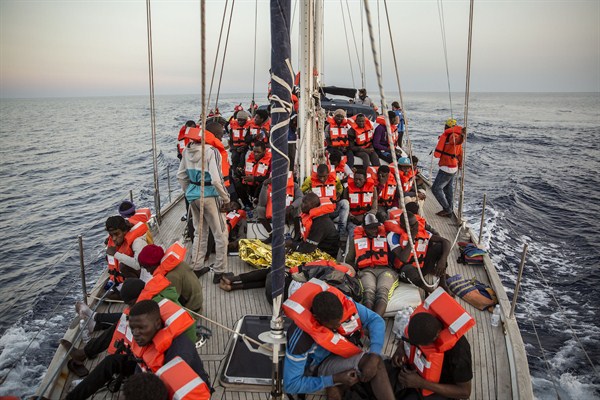
The European refugee crisis of 2015 has long since abated, and some of Europe’s leading figures on the far right from that time, like the Netherlands’ Geert Wilder, have lost relevance as a result. Nevertheless, other far-right populists—like France’s Marine Le Pen and, more recently, Eric Zemmour—continue to hammer on anti-immigrant sentiment to fuel their electoral ambitions. And Italy’s Matteo Salvini just made a comeback in recent elections and will likely be part of the next coalition government set to be led by Giorgia Meloni and her far-right, anti-immigrant Brothers of Italy party.
In the aftermath of a global pandemic that at least initially inhibited migrants’ mobility, it is not clear the issue will continue to have the same impact as it did in 2015, when more than 1 million refugees and asylum-seekers arrived in Europe from Syria and elsewhere in the Middle East and Africa. Still, the populist narrative of immigration as a threat is enough to keep centrist governments toeing a tough line on the issue at home, even as they work with countries of origin and transit to restrict migration. And last year, Belarusian President Alexander Lukashenko demonstrated the continued salience of that “threat narrative” when he tried to “weaponize” migration by encouraging refugees from Iraq to travel to the Polish border, where many were left stranded in freezing conditions.
The issue’s political divisiveness is hardly limited to Europe. Anti-immigrant sentiment was central to former U.S. President Donald Trump’s winning 2016 campaign, and he subsequently reshaped U.S. security policy around stopping illegal immigration, although the issue did not have the same resonance in the 2020 presidential campaign. President Joe Biden has already reversed some of Trump’s most controversial measures and promised a more comprehensive approach to addressing the root causes of the Central American migration crisis. But so far that has not been any more effective at curbing record numbers of arrivals at the southern U.S. border.
With political debates over migration often dominated by short-term strategies, many of the persistent drivers, including persecution, conflict and war, go unaddressed. The United Nations Refugee Agency’s most recent figures counted 89.3 million forcibly displaced people around the world at the end of 2021, up from 82.4 million in 2020. Among them were 27.1 million refugees and 53.2 million internally displaced people. While global leaders might seek to curb migration by spurring economic growth, they cannot ignore the role played by conflict and persecution, which often make asylum-seekers unable to return to their home countries. Meanwhile, there has also been little global focus on future drivers of migration, including climate change.
Efforts to craft some kind of global consensus on migration—like the U.N. Global Compact on Migration, which several countries, including the U.S. under Trump, backed out of—are similarly falling victim to the same forces demanding quick solutions to a complex issue. In the meantime, the trend among wealthy countries to force refugees and asylum-seekers to await the processing of their claims in third countries is threatening the very principles of international humanitarian law that underpin the refugee and asylum system.
No comments:
Post a Comment